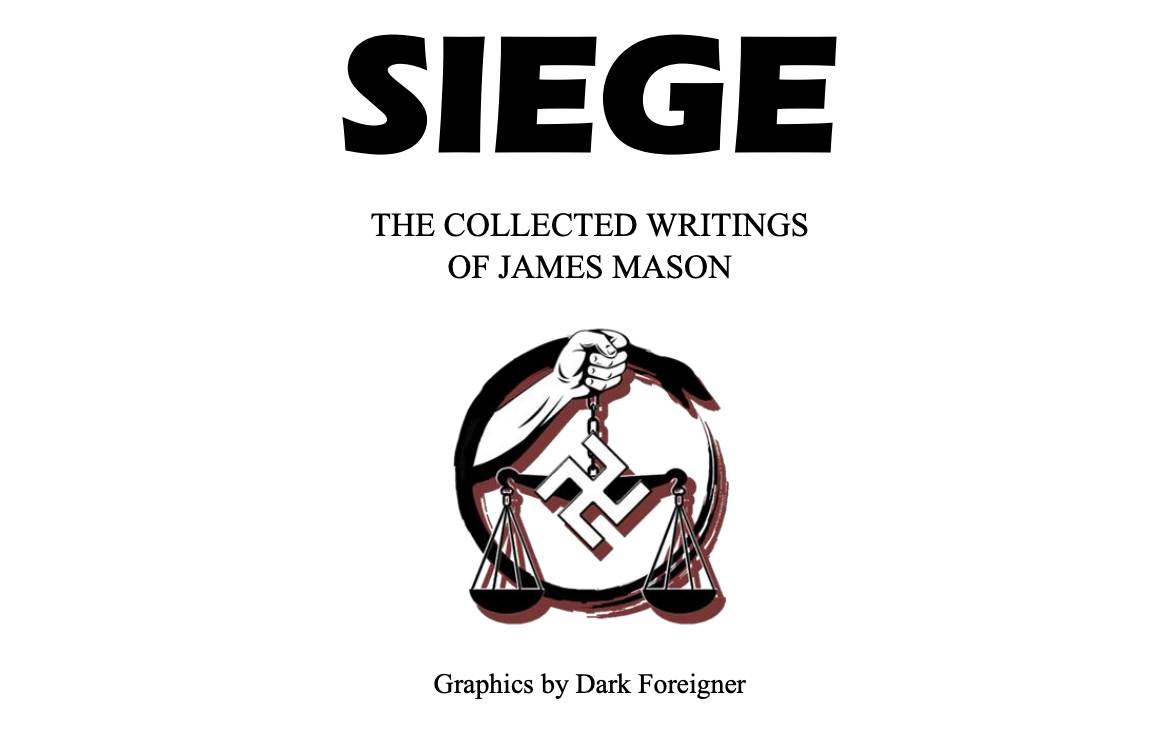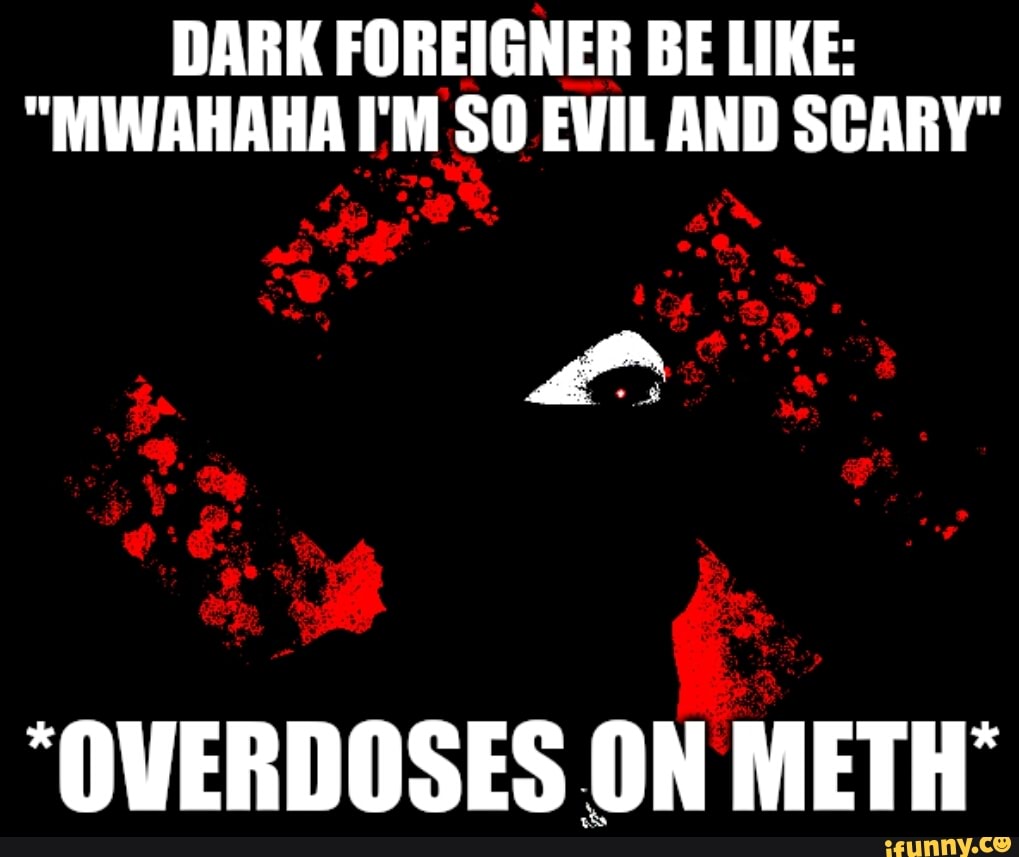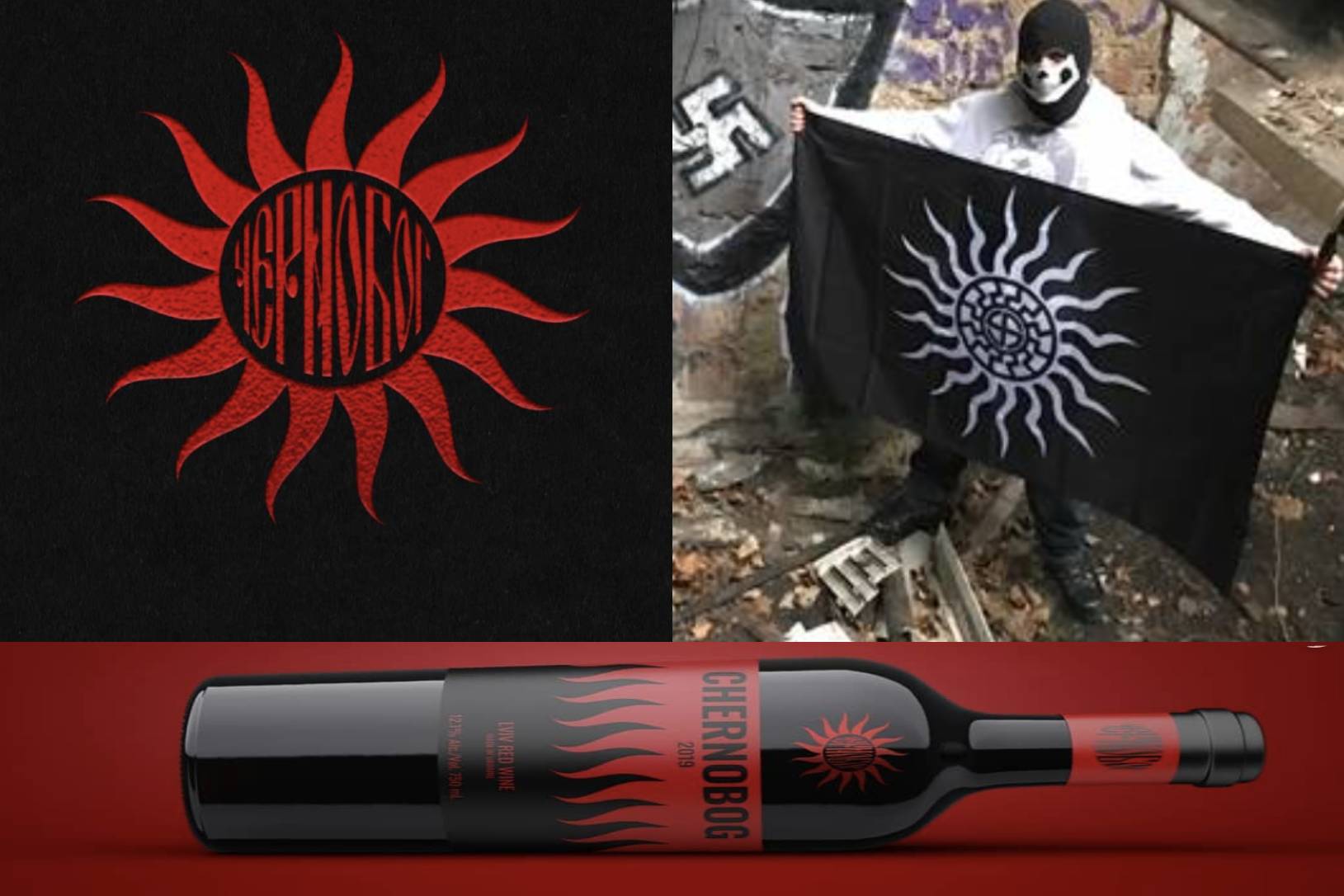In 2018, a special fourth edition of Siege, a hyper-violent neo-Nazi insurgency manual penned in the 1980s, was released. On the cover that was shared thousands of times, drawn in silhouette and with harsh lines, was a figure of a masked man with the face of a white skeleton and bright red dots for eyes.
The sketch helped popularize the way followers of Siege, written by a man who is now listed as a terrorist entity by the Canadian government, would forever see and dress themselves: as murderous insurgents, intent on carrying out acts of terrorism to accelerate the collapse of society, all the while wearing what is now their trademark black skull-mask balaclava.
Videos by VICE
Not much else was really known about the illustrator of this iconic image other than that he went by the alias “Dark Foreigner” and lived in Canada. For years, he was like a ghost; as several others in the fast-growing movement went to jail or were doxed, he carried on spreading his prolific propaganda on fringe art sites and inspiring terror groups the world over.
Until now, the public has never known his true identity: Patrick Gordon MacDonald, a 20-something graphic designer from Ottawa, Canada, who lives with his parents. In a quiet capital city, under the noses of authorities, MacDonald helped define the aesthetics of a terrorist movement that has worried law enforcement agencies around the world.
A person who was formerly in the scene with MacDonald told VICE World News of his identity. Multiple confidential sources monitoring neo-Nazi terrorists independently confirmed the young Canadian was indeed the prolific neo-Nazi propagandist.
Multiple emails sent to MacDonald, family members, and people the Canadian had done work for went unanswered. Despite the lack of response, email tracking software shows the emails sent to MacDonald were viewed over 30 times and those sent to his family members and customers were likewise opened and viewed numerous times, but not responded to.
VICE World News tracked MacDonald down to his doorstep in suburban Ottawa to hand-deliver a list of questions in an envelope. The woman who answered the door refused to comment or give access to MacDonald.

“I’m not able to, or whatever,” she said, adding “Thanks” when told of MacDonald’s involvement with neo-Nazi organizations. MacDonald did not come to the door and continues to dodge questions surrounding his prolific activities supplying art to the world of far-right terror.
‘Let’s bring a new image of terror and dread to the 21st century’
In the summer of 2017, MacDonald first appeared under his alias on IronMarch, a far-right forum that was the digital birthplace for Atomwaffen, which subsequently inspired several other groups. The young man introduced himself as a budding fascist with a penchant for Photoshop.
He told the other users he drifted from what he described as typical Canadian liberalism into increasingly right-wing and anti-Muslim politics (which he called “National Socialism-lite… racialism lite for people who want to be like them but not ‘racist’”) and eventually found himself fully aligned with neo-Nazism. He said he met up in person with people in his community who shared his beliefs, but found them “annoying timewasters” prone to gossip and unwilling to follow through with plans. On IronMarch he hoped to “learn about how to do proper activism, and to develop proper skills that would assist in fascist activism in Canada and what not.”
“I’m decent in Photoshop,” he wrote. “(Trying to log as much hours in it to get more skilled with propaganda), beginner at illustrator, and a newb at after effects although I’m trying to improve each daily.”
He signed his introduction with his alias. Within two years of that initial post,Dark Foreigner would become well known among neo-Nazi accelerationists—which includes groups like Atomwaffen, the Base, and hardcore followers of Siege, who all believe that acts of violence will accelerate or hasten the collapse of world governments. (Among analysts and journalists who track it, this subgenre of far-right extremists are colloquially known as “skull masks” in reference to their inclination for wearing the skeletal balaclava in propaganda videos.)
Though MacDonald has never been arrested or directly implicated in any crimes, his supply of imagery to groups like Atomwaffen, which is linked to five murders and various other crimes in the U.S., underscores how important the role of art and propaganda are in establishing and attracting young recruits into extremism. In much the same way slickly-produced ISIS videos from the mid-2010s, with their visceral gore and all-black uniforms. helped attract recruits, Dark Foreigner’s art created the brand and aesthetic for Siege followers, aiding the ideology in festering across the internet into the national security problem it is today.

Currently, MacDonald runs a graphic design studio out of Ottawa called Helios Design Studios, which says it caters to companies both “nationally and internationally” and promises to “establish brand identities that last,” not unlike the distinct oeuvre of works he created for neo-Nazi terrorist groups.
The art MacDonald created for the neo-Nazi youth movement was overt in its ideology and frequently employed profiles or silhouettes of menacing figures carrying weapons, sometimes splashed with blood and accompanied by messages like “only whites died on The Day of The Rope”—a reference to a scene in the beloved neo-Nazi text The Turner Diaries, in which neo-Nazis kill race traitors. He also created work for other neo-Nazi figures like Alexander Slavros, an influential neo-Nazi writer who founded Iron March. MacDonald made the cover for Slavros’ book Zero Tolerance, which was meant to be a modern neo-Nazi accelerationist manifesto similar to Siege. The term “zero tolerance” itself is a reference to a neo-Nazi adage of accepting nothing less than murder when it comes to those they deem undesirable.
VICE World News contacted the Canadian Security Intelligence Service, the RCMP, and Ottawa police to ask about MacDonald and Atomwaffen. The RCMP said, “Only in the event that an investigation results in the laying of criminal charges, would the RCMP confirm its investigation.” CSIS and Ottawa police likewise would neither confirm nor deny if they were investigating MacDonald.
“We do not publicly comment, or confirm or deny the specifics of our investigations, operational interests, methodologies, or activities,” Keira Lawson, a spokesperson for CSIS, told VICE World News. “With that said, what I can say is that the Canadian Security Intelligence Service takes very seriously the threats posed by individuals who engage in religiously, politically, or ideologically motivated violent extremism.”

The distinct style MacDonald used to make his imagery helped establish and popularize the aesthetics of the distinct “Terrorwave” style evident across many genres of far-right propaganda. Sometimes employing jagged block letters and shadowed men in profile carrying guns, Terrorwave is immediately recognizable in the propaganda of the current far-right. Journalist Jake Hanrahan, who first identified Dark Foreigner as Atomwaffen Division’s chief propagandist, helped define this digital art movement as an “amalgamation of 21st century nihilism, edgy Internet culture, and the repressed frustration of Western lads.”
That Terrorwave aesthetic went on to define the look of legions of other neo-Nazi terror groups after Atomwaffen, including the Base, Sonnenkrieg Division, and Fuerkrieg Division. These groups combined have accounted for dozens of arrests of neo-Nazis around the world on terrorism-related charges and attracted hundreds, if not thousands, of followers into neo-Nazism. Canada recently declared Atomwaffen and the Base official terrorist organizations, while a congresswoman in the U.S. recently pressured the Biden administration to do the same.
While some of his works are obvious odes to people revered as “saints” by the groups, like Timothy McVeigh, who killed 168 people in the infamous 1995 Oklahoma City bombing, there are also allusions to a fringe Satanic movement and glorifications of Osama Bin Laden.
To this day, several propagandists in the neo-Nazi community actively copy his style. For example, a propagandist for the Base, a California teen who went by the alias Poilu, was either influenced by MacDonald’s artwork or wholesale plagiarized it. Inside a chatroom used by the Base, members described the work of Poilu as the “Dark Foreigner style” and outside of the group followers found the artwork so similar many even believed the Canadian was a member (he wasn’t).
“The fact that you and I can sit here and and both say we saw an account that was so good at mimicking this guy’s art style that we both thought it was him speaks for itself in terms of him being such a prolific propagandist,” said a far-right researcher, who asked not to be named out of fear of retribution, in an interview with VICE World News. “He was so prolific in this scene, maybe even could be described as instrumental, in making it take off, popularizing it, giving it that distinct aesthetic, almost kind of like shaping it into a (brand).”
“You think of [his work], you think of the skull masks, but also the red and white and the heavy contrast art. It’s up there on the same tier.”
The Dark Foreigner Network
MacDonald wasn’t going to settle for being a mere propagandist, however. He had eyes on something bigger.
In one post on Deviant Art—one of MacDonald’s main art hubs until his blog on the site was deactivated in 2019—he laid out what he called the “Dark Foreigner Network,” posting links to a web of profiles on social media sites including Twitter, Gab, and Instagram, and a variety of multimedia projects he was trying to launch.
He also claimed to have musical skills, promising his fans that on SoundCloud he would post songs that were as “raw and gritty as you’d imagine.” On a YouTube page he hyped up his channel by telling his fans, “Expect the terror image to be brought to video with my YouTube channel, DarkforeignerTV.” He linked out to the Atomwaffen’s website (called “siegeculture” at the time) explaining he’d been helping the group “spread out an image of terror through creating the SC graphics and helping with articles and other projects.”
It was clear MacDonald viewed his online alter-ego as more than just a pseudonym.
“This art project has gone from a simple past time to a full on obsession of mine, helping out groups, Atomwaffen, and many others,” he wrote. “This blog will have DAILY posts now, and nothing will stop the Dark Foreigner project. Stay posted for a whole new wave of killer content. Let’s bring a new image of terror and dread, to the 21st century. Hail Victory.”

VICE World News viewed the YouTube and Soundcloud pages when they were active in 2018, but have since been taken down. To the many skull masks and their adjacent fanboys and trolls, MacDonald was more than just a graphic designer for the movement. He was a celebrity.
“Dark Foreigner has definitely built up a mythos around himself,” said a former member of the neo-Nazi community who requested anonymity and was active around the same time as Dark Foreigner. “He’s much more his propaganda than he is regarded individually. Who he is doesn’t matter to people as much as what he has contributed.”
Though he had won renown among his peers, Dark Foreigner began to fade from the movement. The time of his exit correlates with a trip to the United Kingdom in the winter of 2019. MacDonald was stopped by U.K. counterterrorism agents who detained him in February 2019.
Nick Lowles, the founder of the anti-racist collective Hope Not Hate, says that he confirmed through his sources that MacDonald travelled to the United Kingdom to visit several extremist groups. Lowles said that even across the Atlantic, MacDonald’s art was influential.
“Dark Foreigner has had a major influence on the O9A-inspired Nazi terrorist scene in the U.K., through his direct contacts with members of the now banned Sonnenkrieg Division,” said Lowles. According to Lowles, he met up with members and produced some of the group’s artwork during a visit to London in 2019.
Multiple members of the neo-Nazi organizations that MacDonald galavanted with in the U.K. have been slapped with a myriad of anti-terror charges. Andrew Dymock, the founder of Sonnekreig Division whom MacDonald created propaganda for, was convicted of 15 offences, including five counts of encouraging terrorism, four counts of disseminating terrorist publications, and two counts of terrorism funding last month.
Three days after being stopped by U.K. authorities MacDonald flew back to Canada. Neither Canada’s federal police force, the Royal Canadian Mounted Police, nor its spy agency would officially confirm or deny knowledge of MacDonald’s connections to global far-right terrorism. The Home Office in the U.K. declined to comment on MacDonald, and said it does “not comment on individual cases.”
According to several people who either followed the community closely or were active within it, after his detainment in the U.K., Dark Foreigner vanished from the accelerationist crowd. His final post on Deviant Art, on March 28, 2019, was some typical artwork with the tagline, “Tonight we paint the stars red with blood.”
For years, the artist behind some of the most influential works of propaganda among neo-Nazi terrorists became more of a myth than an active member. In 2021, after roughly two years of being inactive, the name Dark Foreigner resurfaced in rumors among his former compatriots that said he died as a result of a drug overdose. The hearsay about his fate even appeared on iFunny, a meme site that several neo-Nazi groups recruit out of. Two memes popped up in February. One said, “MFW Dark Foreigner hits the super saiyan aryan sinister meth pipe and dies” over a cartoon of Spongebob Squarepants.

Ethos and Helios
Aesthetics plays a key role in niche subcultures like accelerationist neo-Nazism, said Ana Raposo, an art professor at ESAD College of Art and Design who sits on the board for the academic magazine Punk & Post-Punk. The propaganda is formed by the group but, in turn, the group is also shaped by the propaganda as the members attempt to mould themselves into the way they’re presented to the outside world.
“The group uses this aesthetic so that they can identify themselves,” Raposo told VICE World News. “It’s everywhere they use it, their signatures on blogs as the background on their computer, and they share it widely.”
On top of shaping the group’s understanding of itself, the artwork and aesthetic of a scene play a tangible role as a symbol for those entering into or looking to identify fellow members. Within some chats among neo-Nazi accelerationists, some users are seen bragging about having a Dark Foreigner avatar.
Do you have information about extremist groups? We’d love to hear from you. You can contact Mack Lamoureux and Ben Makuch securely on Wire at @benmakuch and @mlamoureux, or by email at mack.lamoureux@vice.com or ben.makuch@vice.com
“Because you’re talking mostly about people that are not highly educated, usually images are an easier way to access information,” Raposo said. “It’s kind of something that even if you are not reading it, it’s always there. So you don’t need lots of effort to consume it.”
This is particularly evident as Dark Foreigner frequently used profiles of extremists or figures with violent histories as the centerpiece in his art. This allows the average, less well-read neo-Nazi to key in on the fact the group is supportive of Ted Kaczynski, Savitri Devi, Anders Brevik, or even Osama Bin Laden (all of whom MacDonald created propaganda around) without having to actually interact with the material to understand why.
Despite what the Spongebob meme says, MacDonald is alive in Ottawa and his current artwork in some sense harkens back to his short time as one of the premier neo-Nazi propagandists.
On his website, he offers several examples of the work he’s done building the “brands” of international companies. One of the most striking brands he created that’s listed on his site is for a Ukrainian wine company that has no online footprint. (It is possible the brand is a proof of concept for his design company.) The company is called “Chernobog Wine” and is apparently based in Lviv, Ukraine—a city known as a destination spot for far-right extremists who travel to the country on their way to participate in the war in Donbas.
The proposal MacDonald created uses the slogan “Underworld Palate.” The sun featured in the image is remarkably similar to the sun used by the U.K. neo-Nazi group Sonnekreig Division.
“Our proposal is based on a strong symbol and colour pallete [sic] that communicates both the Slavic and mythological themes of the company,” he wrote in the description on Instagram.

On his Instagram page for Helios, there’s also an image he produced for an alleged business with the French fleur-de-lis, often associated with Quebecois nationalism, and another with the “Tryzub” or trident from the Ukrainian coat of arms for a company he labels as “Neptune.”
Helios Design Studios can be publicly traced back to MacDonald through several ways, including one of his family members tagging Helios Design and thanking his “little brother @patrick.helios for making… the new cards.” The tag linked to a now private Instagram account for MacDonald with an image of himself with his face cropped. Helios Design Studios also posted about the design for his brother’s cards.
The vast majority of the work he presents on the website and social media pages seem to be proofs of concept similar to Chernobog Wine. One piece of art he designed was a logo for a registered massage therapist in Ottawa in the summer. The second appears to be the logo for his brother’s stonework company in Victoria. The logo features a type of Celtic knot embedded on a stone hatchet. MacDonald also created logos for two freelance photographers based in Ottawa.
Several of the businesses MacDonald worked with wouldn’t respond to VICE’s questions. One person who hired him said he was shocked to learn about his history and described MacDonald as a dry, humourless person.
Despite what appears to be relatively few commissions to his name (at least judging from his list of published work), MacDonald’s website is polished and he’s promoting himself with snappily edited videos. In one, shot in black and white showing him working near a babbling brook, you see a man who seems to be MacDonald from behind. In the video, which is punctuated by a drum beat similar to what you would hear in an insurance ad, he instructs his followers to “get serious” about their brand.
The advertisement, which has been viewed 38 times, is a far cry from the days just two years prior when he could post an image that would be shared thousands of times by a network of dangerous neo-Nazis, many of which would go on to be arrested by the FBI. Despite his lasting footprint within the neo-Nazi movement, Raposo said that artistically he never really treaded any new ground.
“He’s trying to be shocking,” said Raposo when reviewing MacDonald’s art. “The work has this aggressiveness to it through the textures, the sharp edges, the figures, but it’s nothing new, to be honest. It’s something I’ve seen loads of times. It’s something that is very outdated. It’s beaten.”
The Canadian Anti-Hate Network aided in this investigation’s research.
More
From VICE
-

Illustration by Reesa -

Screenshot: Peacock -

Screenshot: Shaun Cichacki -

Screenshot: Peacock
